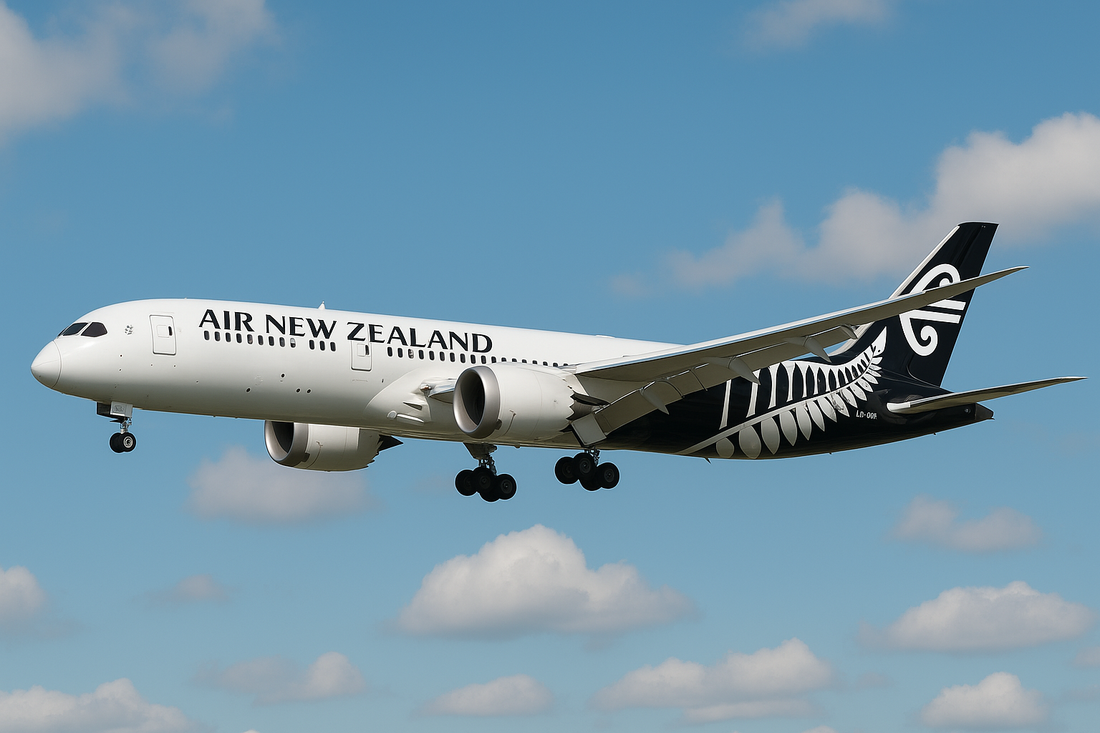
Air New Zealand Exercises B787 Options
Share
Air New Zealand has exercised options to acquire two more B787-10s and tempered the forecast compound annual growth rate of its international operations, according to details in an August 28, 2025, investor presentation that accompanied the release of the airline’s 2025 financial year results.
The presentation notes the airline exercised the options on June 30. It anticipates delivery of the aircraft in 2028 and 2030, respectively. Air New Zealand also purchased a B777-300ER going off lease during the last financial year. The airline says the purchase will add to “future fleet resilience.”
Compound annual growth rate is a financial metric that measures the mean annual growth rate of an investment over a specific period. It smooths out fluctuations to provide a clear picture of its performance.
Twelve months ago, Air New Zealand was forecasting a four-year compound annual growth rate of its international operations of between 3 – 5%. Now, it has slightly lowered the forecast to between 3 - 4%. The airline says the slowdown is primarily because of the latest internal estimates of B787-9 aircraft availability.
Air New Zealand operates fourteen B787-9s on its international network. However, throughout calendar 2025, the airline has had several of these aircraft grounded at any one time because of engine maintenance requirements and cabin refurbishments. Currently, three are out-of-service.
Detailed and time-consuming inspections of potentially faulty Rolls Royce Trent 1000 engines powering the B787-9s are causing operational havoc at airlines worldwide.
Air New Zealand now says it expects the aircraft shortage to start easing next year. It expects most aircraft to be back in service by the end of calendar 2027. At this point, Air New Zealand anticipate strong capacity growth on its international network.
Aside from the B787-9s, Air New Zealand operates ten B777-300ERs, eight A321-200NX, and six A320-200N across its international network.
The airline is also experiencing significant problems without-of-service A321-200NX due to problems with their Pratt & Whitney manufactured engines. However, this is mostly affecting a separate tranche of A321NX tasked to domestic flights. Again, the engine problems are not specific to Air New Zealand.
An additional 13 aircraft on order will support much of Air New Zealand's post 2027 growth. Having recently exercised those options, the orders include ten B787s (a mixture of B787-9s and B787-10s) and three A321-200NX. Three of the ten B777-300ERs are at Air New Zealand on short term operating leases and the expected aircraft will eventually replace these, amounting to a net growth of ten international configured aircraft.
More restrained growth across Air New Zealand’s domestic network will be backed by the addition of two domestic-configured A321NXs and one ATR72-600.
Air New Zealand’s latest aircraft delivery schedule through to 2030 is shown below.
 Meanwhile, last week, Air New Zealand also announced before-tax earnings for the 2025 financial year of NZD189 million (USD111.4 million). This is down on the previous year but was the first full financial year in which Air New Zealand was impacted by the engine maintenance related groundings.
Meanwhile, last week, Air New Zealand also announced before-tax earnings for the 2025 financial year of NZD189 million (USD111.4 million). This is down on the previous year but was the first full financial year in which Air New Zealand was impacted by the engine maintenance related groundings.
CEO Greg Foran said engine availability remained the airline’s most significant operational challenge. He expects to have around 11 aircraft grounded (or around 20% of the overall fleet) at any one time this year.
“While the airline received NZD129 million (USD76 million) in compensation from engine manufacturers, we estimate earnings before taxation of NZD189 million would have been approximately NZD165 million (USD97.3 million) higher had the fleet operated as intended,” he said.
But Foran, who is stepping down in October, did offer some optimism regarding the engine issues.
“While we’re not through it yet, we are seeing early signs that the most acute phase of the disruptions will be behind us this year,” he said. “The path to recovery will not be linear, but we are approaching it with focus and discipline.”
